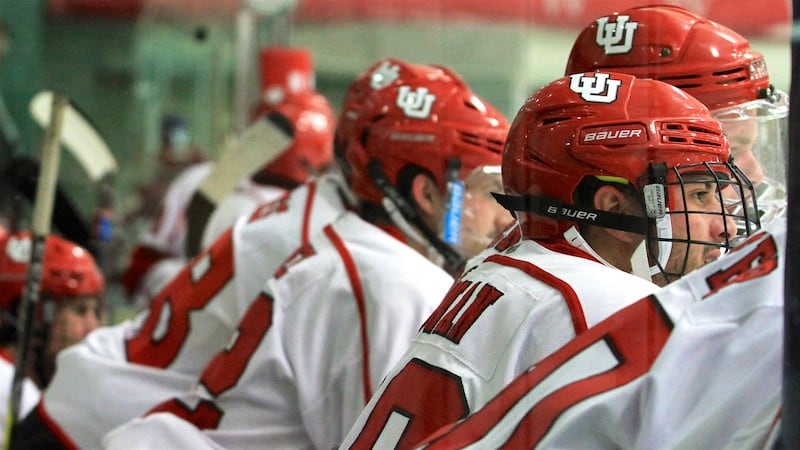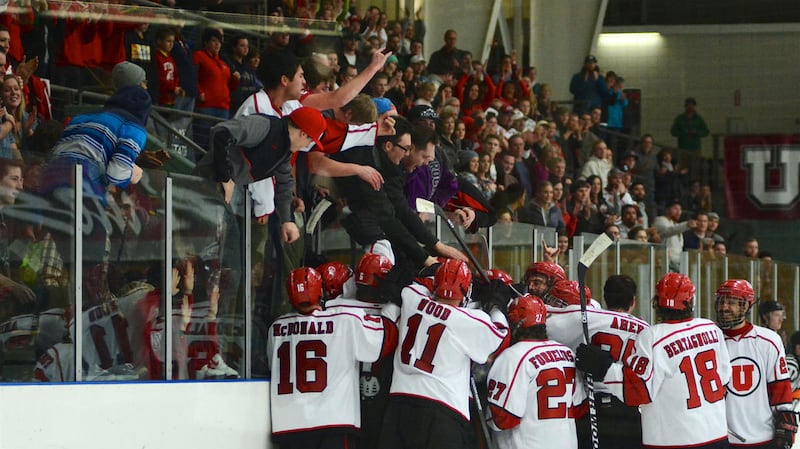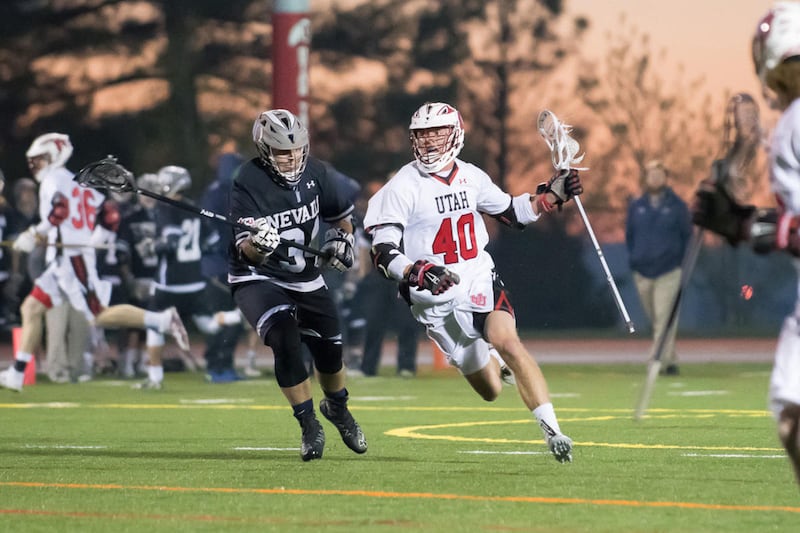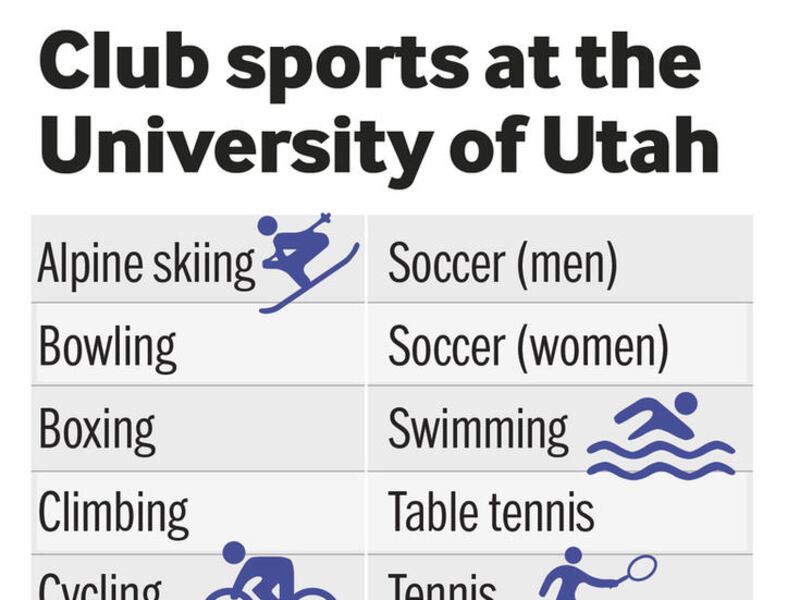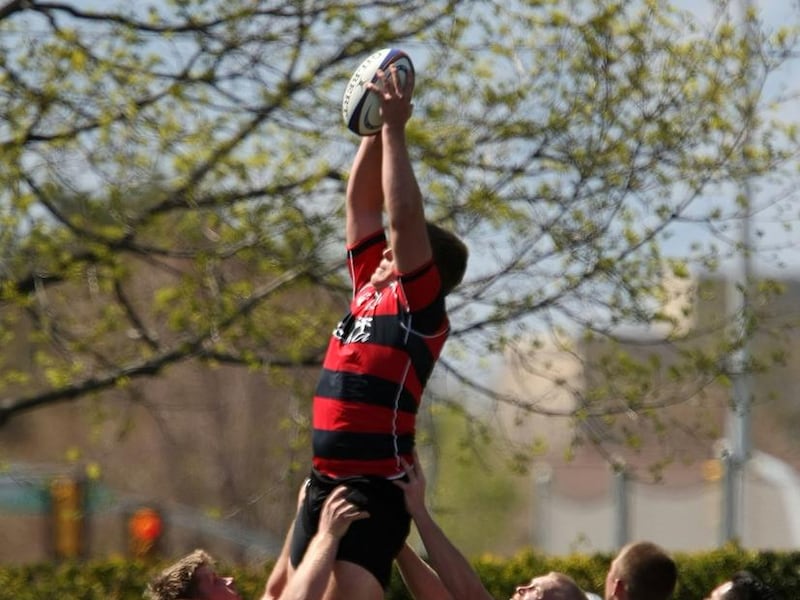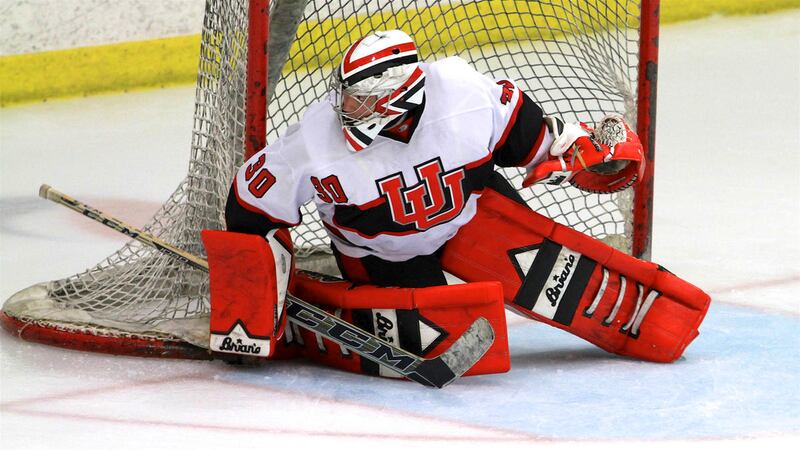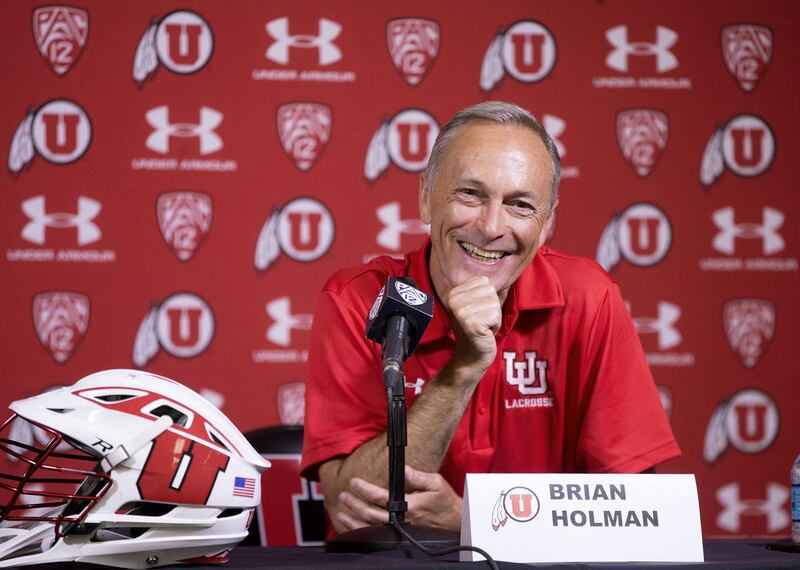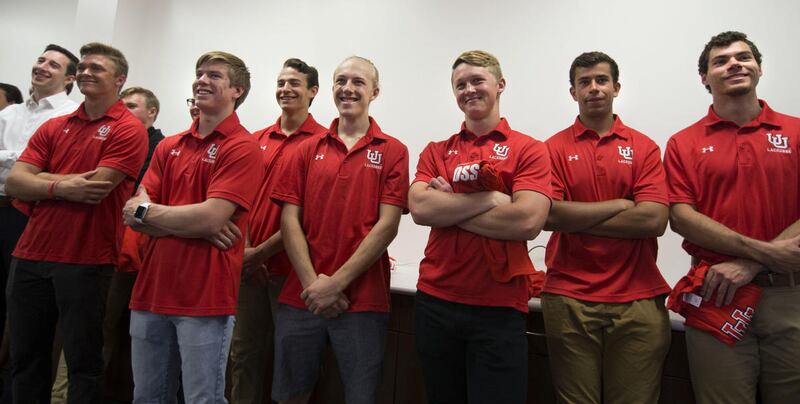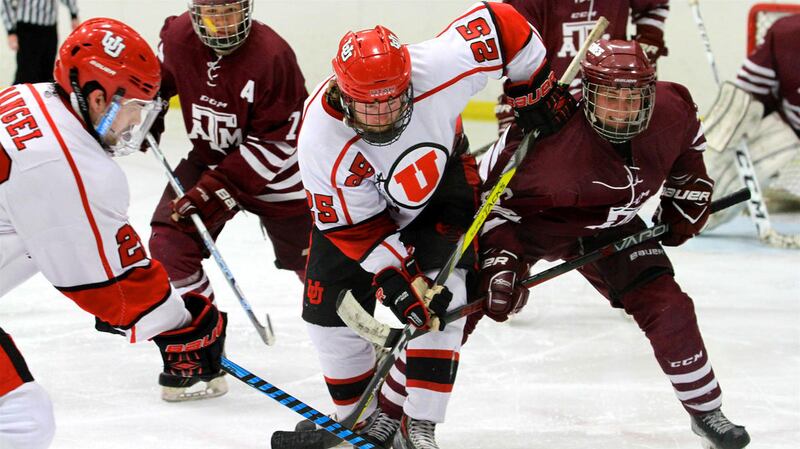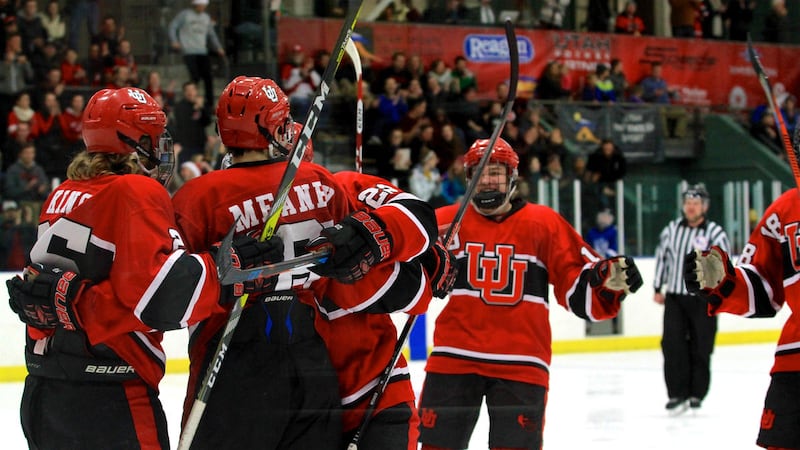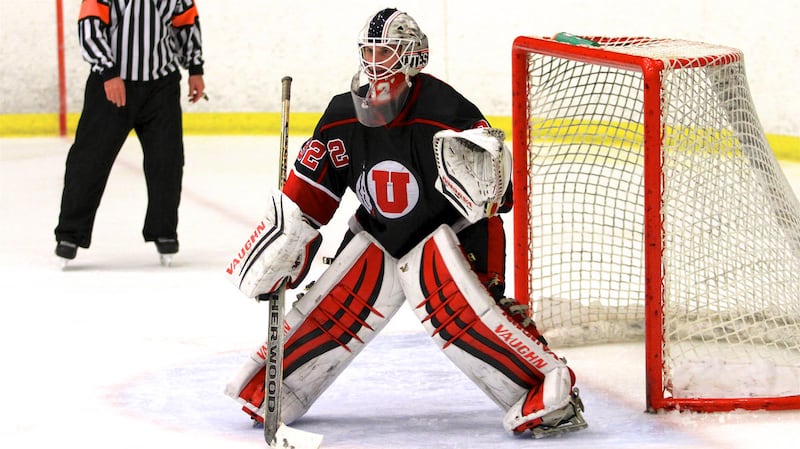SALT LAKE CITY — Men’s lacrosse didn’t just materialize at the University of Utah. The program, which will receive NCAA status in 2018-19, has a long history as a club sport up on the hill.
In that world, there are no scholarships and limited funding. Donations are sought, player fees are commonplace, and the work schedules of participating students are accommodated.
For head coach Brian Holman, the latter was an especially eye-opening aspect. After eight seasons as an assistant at North Carolina, he came to Utah last year and learned that approximately half of the players on the club team had part-time jobs.
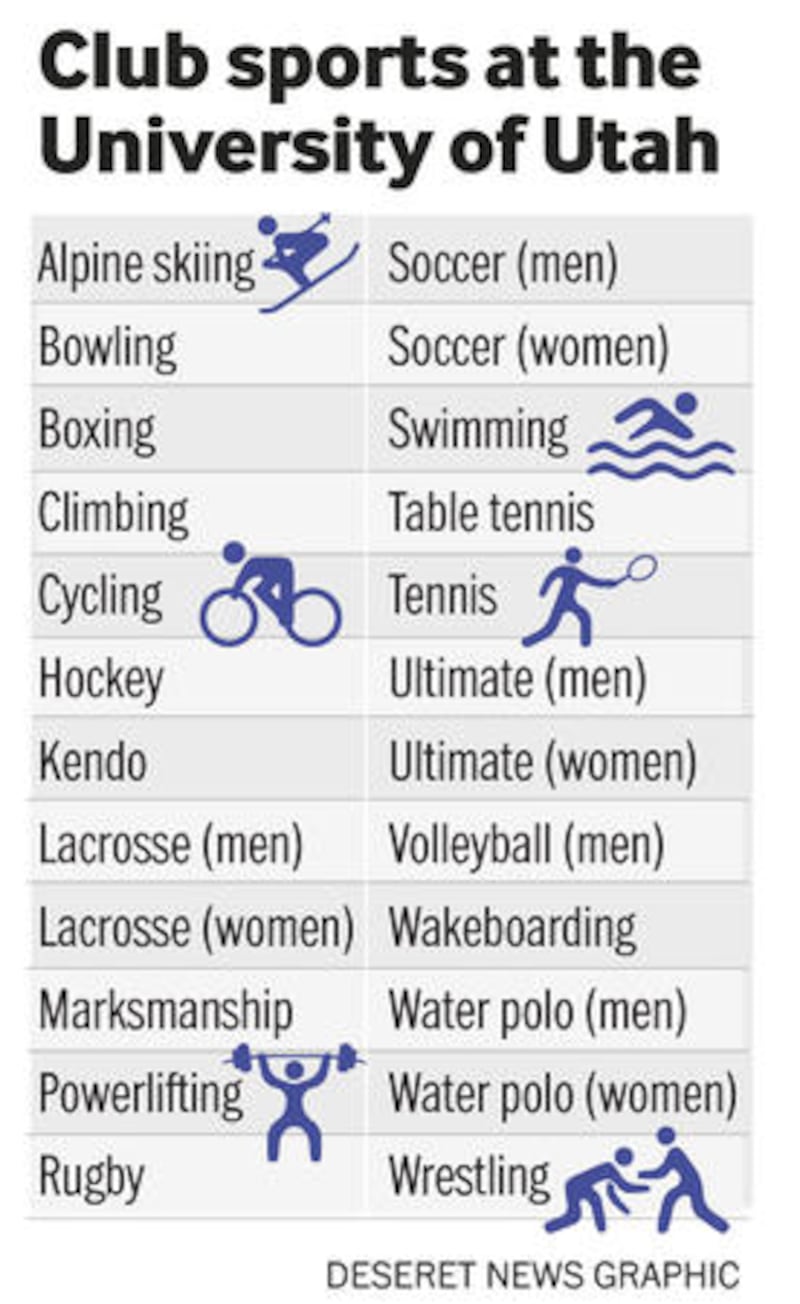
Working around such things, he acknowledged, is how it is with club programs.
“Everything’s a challenge,” Holman said.
The Utah men’s lacrosse team, though, is different than most. Holman noted that it's blessed to have a lot of support.
“I have an increased, tremendous admiration for the club world,” he said. “From the lacrosse perspective I know it’s a huge help for our game. I didn’t realize what it provided for a lot of these kids.”
Volunteers are a huge part of the operation.
“If you’re just trying to run a club on your own there’s a lot of work,” Holman added. “I have so much admiration for those people. It’s beyond belief.”
At Utah, club sports operate under the umbrella of Campus Recreation and not the athletics department. Men’s lacrosse, thus, currently exists alongside other club programs like alpine skiing, bowling, climbing, cycling, hockey, Kendo, women’s lacrosse, marksmanship, powerlifting, rugby, men’s and women’s club soccer, club swimming, table tennis, men’s and women’s Ultimate Frisbee, wrestling, men’s volleyball, wakeboarding and men’s and women’s water polo.
Approved teams are allowed to use the University of Utah name and can request funding of $5,000 or less through student government. Campus Recreation provides additional support in the form of scheduling, administrative matters and facility use.
There’s a diverse group of participants, encompassing programs for nearly 600 students and 25 teams. That was the case in 2015-16 when a new Campus Rec facility on campus boosted participation by 47 percent. This year’s final numbers have yet to be posted.
“We are both happy and proud that we can offer this opportunity to the students up here,” said Campus Rec director Mary Bohlig. “These are students who are extremely passionate. So much so that they’re going to take money out of their pocket to play.”
Barb Snyder, vice president for student affairs, noted that club sports represent a way for individuals to take up a new interest or, more often, maintain participation in something they were engaged in while growing up. It’s also a path for those not qualifying to play at the intercollegiate level. Many of the programs aren’t offered in any other form at the U.
“We certainly encourage individuals to stay engaged, obviously, in physical activity, team play and working with others for a common goal,” Snyder explained. “There are a lot of really, really good attributes about individuals being involved in team sports and developing sportsmanship and the like. So we’re very excited about the club sports we have.”
The teams, Snyder continued, are asked to meet a very robust set of expectations. The club programs are self-governing. They elect their own leaders and representatives. Some hire coaches that are paid by an outside entity. Some charge a participation fee. She noted that the women’s lacrosse team has a lengthy run of backing and rugby has a very vibrant alumni group in the greater Salt Lake area providing support — financial and otherwise.
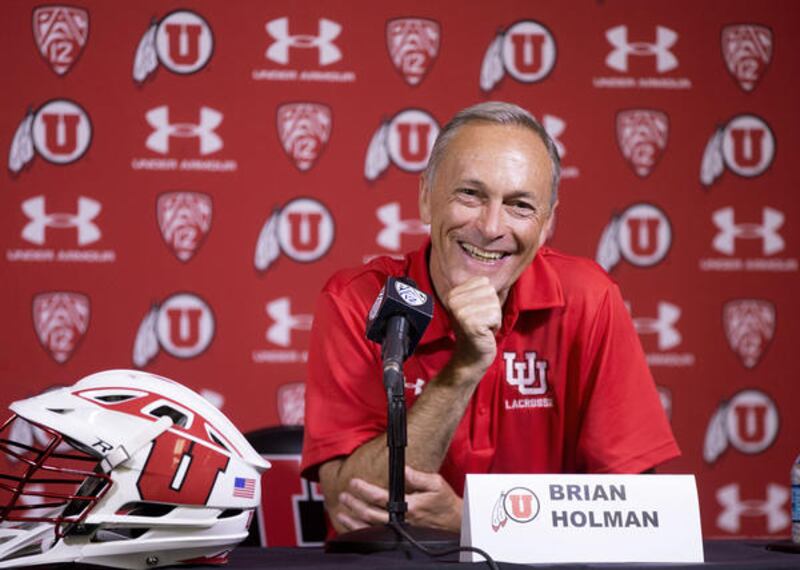
University of Utah lacrosse coach Brian Holman speaks at a press conference that announced that the university will begin sponsoring men's lacrosse as an NCAA sport starting in 2018-19 on Friday, June 16, 2017. | Laura Seitz, Deseret News
In the case of men’s lacrosse, several variables came into play when the opportunity arose to make it an NCAA sport at Utah. The rising popularity of the sport was a factor. So, too, was the creation of a task force to look at how a club program could evolve to the highest level of collegiate competition. Snyder was part of the group, as was deputy athletics director Kyle Brennan and members of the faculty.
Utah athletics director Dr. Chris Hill credits the committee for establishing a blueprint for club sports to make the jump to NCAA Division I competition. Financial sustainability without hurting other sports is part of the equation, as is Title IX compliance, gender equity and other considerations.
Men’s lacrosse fit the criteria established by the group. Snyder pointed out that many of the scholarship programs that are added across the country these days are endowed.
“It’s just getting so expensive to maintain as many sports as we have,” she said, pointing out that the 20 NCAA Division I teams Utah will have beginning in 2019-20 just puts the Utes in the middle of the pack as far as numbers in the Pac-12.
Club sports help fill the void.
“They do very well. They’re serious competitors. It’s not like intramurals. It’s a true competition for them,” Snyder said. “They have great loyalty to their programs, their teams, each other and they go on to maintain lifelong friendships and relationships because of that involvement in sports clubs. It’s another reason we really encourage students to become involved.”
Additional benefits, Snyder continued, is a commitment to being physically active and maintaining important lifetime habits.
And that is something that is widely appreciated.
“We want to have more activity on campus,” Hill said. “We’re very supportive of the teams and want them to grow.”
Even though the athletics department doesn’t dabble into club sports much at all, there is support from administrators like Hill and Brennan.
“I think they serve a great role at the university. There’s a lot of kids that come to college who want to keep competing. They love their sports,” Brennan said. “It’s been a part of their life since they were little and to come to a school and have the opportunity to keep doing it is what everyone wants.”
The competition is keen.
“When you see those teams out there, you don’t know who is D-I and who isn’t. You wouldn’t know the difference,” said Brennan, who noted that the passion and intensity are similar. “So I have a lot of respect for them. We’ll always cheer for them to do well. Anytime anybody from Utah is having success — whether it’s academics or sports — we’re excited for them.”

Members of the Utah women's lacrosse team pose for a picture after placing at nationals. | Courtesy Utah women's lacrosse team
One of the more successful club teams is women’s lacrosse. The program finished second in the nation in both 2015 and 2016. Team president Audrey Burns, a junior-to-be from Pennsylvania who just applied to the U.'s nursing program, said the club experience has been very rewarding.
“I think adding lacrosse to my schedule has made me a lot better as a student and kind of as a person because I’m able to manage my time a lot better,” she said. “But then I’m also doing this thing that I’ve always loved doing and meeting so many people through it and having all these learning experiences.”
Burns wasn’t interested in going to college just for lacrosse. She wanted to keep playing, though.
The program at Utah met her needs.
“I was really intrigued and once I started I just thought it was a blast,” said Burns, who was drawn to the area by an appreciation for Salt Lake City, the nearby skiing venues and the campus.
Women’s lacrosse players at Utah pay approximately $400 for the fall season and then around $2,000 for the spring when most of the games, tournaments and travel are scheduled.
Men’s hockey, another successful club sport at Utah, charged its players $3,650 last season to cover expenses like ice time, referees and travel. Apparel and ticket sales also help to raise funds.
The entire staff, though, is comprised of volunteers.
“What makes us tick, I think, is the love of the game and the student-athletes,” said team president A.J. Boldan, who is also the club’s general manager and goaltending coach.
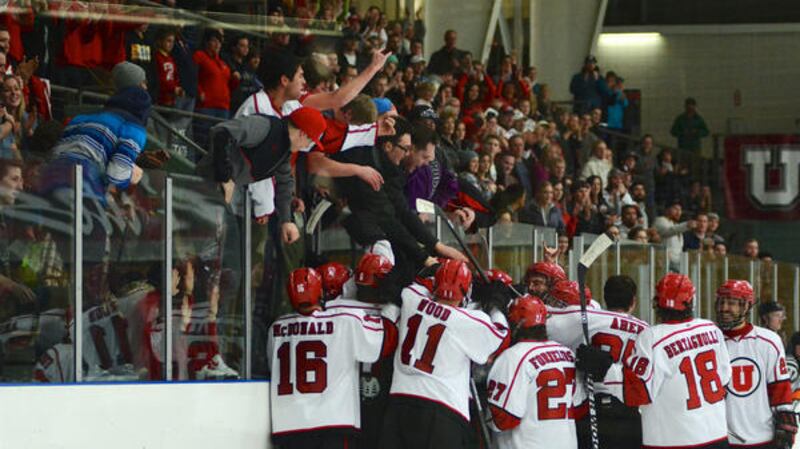
Utah celebrates the overtime win of the Wasatch Cup Championship game versus Utah State on January 31, 2015. | Hannah Padaoan
The Skatin’ Utes, he noted, have cultivated a culture that includes players on the Dean’s List, a team grade point average around 3.1, and an aim to do everything for the right reasons.
“We never view ourselves as a club. We’re not a chess club or anything like that. We run our program just like it were an NCAA program,” Boldan said. “We hold our student-athletes accountable. We hold our staff accountable. Every single season we have to improve, whether it’s better recruits, better records, better hockey, whatever it might be. We always have to get better.”
Boldan noted that has really helped the program grow. Utah has moved to the top tier of collegiate club hockey after winning back-to-back Pac-8 championships. The team, which logged 16,000 miles in travel after leaving the conference for life as an independent at the higher level of play last season, wound up ranked in the top 25 in the nation.
The program has a solid following with more than 700 season ticket holders. Home games are played at the Salt Lake City Sports Complex on Guardsman Way.
“The university has a unique approach to club sports and it’s been working well for us,” said Boldan, who acknowledged that the team is tapped out as far as university funding is concerned under the current model and lengthy legislative process that accompanies it.
An improved home schedule in 2017-18 has Boldan optimistic about a greater revenue stream. The program could also benefit from a feasibility study being funded by the National Hockey League and its players association to expand NCAA hockey at any university looking to do so.
Down the road, there’s hope to establish a women’s team at Utah as well.
“We’re doing a lot of things in a lot of areas and hopefully the slow-growth approach will help us be sustainable and find a remarkable hockey fan base that I think the University of Utah deserves and has,” Boldan said.

